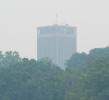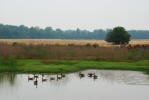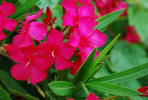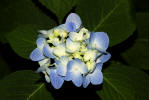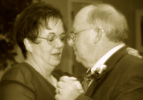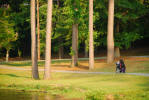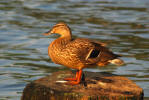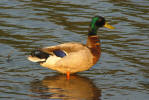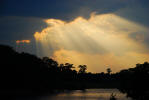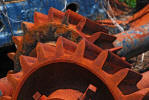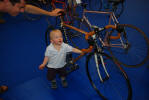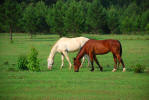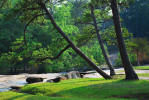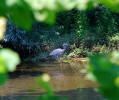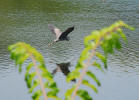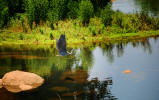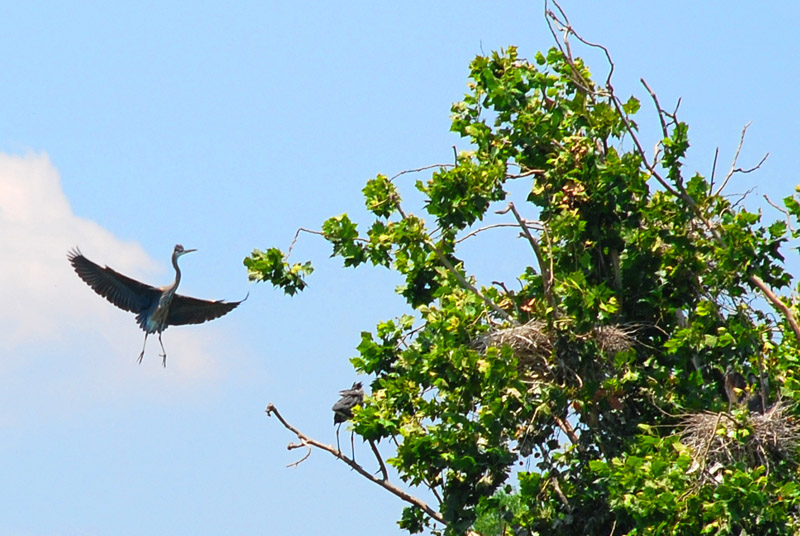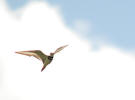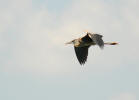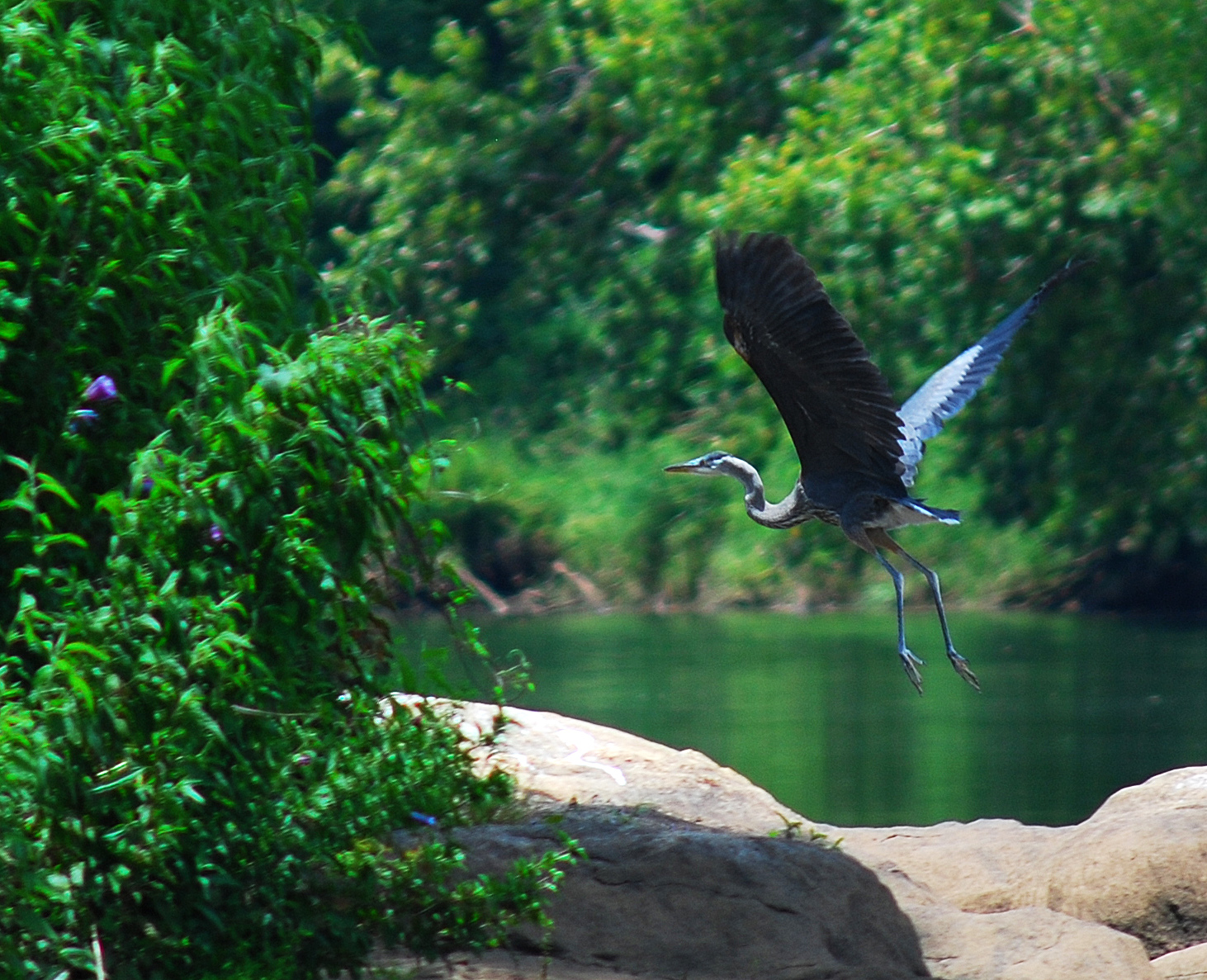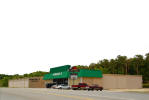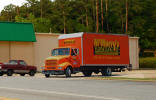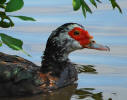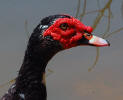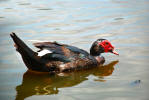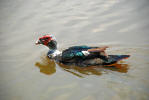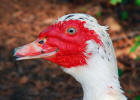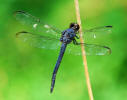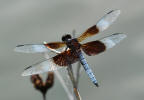|
NIKON D80 DIARY
Back After putting a few dollars aside whenever I could, finally the fateful day arrived when I counted the contents of my little envelope and found myself in possession of a cache of cash of sufficient size to permit the purchase of a Nikon D80. I ordered it with the 18-135mm kit lens (since the 18-200mm VR was still on a seemingly interminable back order) and then had to go back to the site to order the memory card that I had forgotten about in my excitement. Waiting for the camera to arrive was torture (made worse by a long Memorial Day weekend), but by Wednesday it finally arrived. What follows is a collection of emails to friends, some notes and a few images from the first month of shooting.
Why get so excited over a new camera?
Well, sometimes photography is about much more than just taking
pictures. For some it is a form of self-expression, for others a means
of social and political change. For some it is a convenient
means of recording life's moments,
for others it is a lifelong obsession. In my own case, whatever it
was that photography might have been about began around 1967...
A few more years
passed as I continued to shoot film and dream digital. By 2001
I was able to afford a Minolta Dimage 7, a 5MP camera with a
28-200mm macro lens, versatile enough to take some of the sting out
of its non-interchangeability.
But after shooting
for a while, my enthusiasm was dampened a bit by the serious inadequacies
of the compact digital camera, at least when compared to the good
35mm cameras I was used to. Dynamic range was restricted, shadow
detail was poor, low-light images were noisy, auto focus was slow,
and worst of all, the interminable shutter lag (even when
pre-focusing) made any sort of action photography a matter of pure
luck. I dreamed about an interchangeable lens D-SLR, but the costs
were still high, unless I wanted to jump ship to Canon's "Digital
Rebel," the only camera whose price was in the same ballpark as the
high-end compacts.
23 May, 2007: After almost a year of
saving, I ordered my camera yesterday. I am very excited, I had butterflies all
day long and then last night I dreamed that I was setting the new camera on my
tripod to shoot some pictures of the Little Grand Canyon (a scenic spot about 40
miles south of here). Unfortunately, I never got to shoot any photos because
Jimmy Carter showed up with a work crew to build a Habitat For Humanity house on
the rim of the canyon and spoiled the shot. I don't know why, but things never
seem to run smoothly in my dreams.
25 May, 2007: To give me something to keep
my mind occupied until the camera gets here I bought an aftermarket book that
goes thru all the menus and features in more detail than the Nikon manual... 340
pages to this sucker (and it's all English, not multi-lingual). I keep finding
out cool stuff that this camera does that simultaneously promises to greatly
enhance the quality of my photographs and complicate my life beyond all
measure. It's HERE, It's
HERE, It's HERE, It's HERE, It's HERE, It's HERE, It's HERE. Here's a shot of the AFLAC tower, only a quarter mile away. 31 May 2007: This shot of Miyagi was taken with flash in a totally dark room (using the focus assist lamp) and shows the amazing difference in dynamic range between the D80 and my old camera. His hair is pure white and pure black... resolving detail in both has always been a problem for the Minolta, requiring a lot of bracketing or a lot of Photoshop work. In this case, the shot was great right out of the camera, requiring only a bit of color balance adjustment.
How much of the real art in photography is done in the camera and how much in the darkroom (or Photoshop)? This used to be a popular topic of discussion in college, both in class and at the pub afterward. Certainly, the image has to be there in the camera... Cartier-Bresson's "Decisive Moment," when a photographer's creative vision combines with his reflexes and his instincts to capture one instant in time that is significant in a way that the moments immediately before and after were not. Still, there is no arguing that a camera does not see reality the way the eye does and Cartier-Bresson's refusal to crop or manipulate his images in any way always struck me as a copout of sorts... why accept what Tri-X and straight development gives you, instead of taking it a few steps further to more closely match what you saw in the viewfinder? Maybe I'm missing something here, but to totally accept the camera's reality rather than the photographer's vision sort of negates the point of the "Decisive Moment." I guess that's one of the reasons I always admired W. Eugene Smith... he was a gifted photographer but also a gifted printmaker. If the impact of the image he saw in the viewfinder got lost because film alone was not able to display the depth of what the human eye could perceive in a given scene, then he would go to almost any length to restore that vision in the darkroom. Often, the classic Smith print appears dark at first but on closer examination usually contains a full range of tones in the shadows, and an interplay of lighter areas that naturally lead the eye to linger on exactly what is most important in the photograph. Today these sorts of manipulations are far easier with Photoshop and other image
editing programs, and in fact even more complex manipulations are possible, of
the sort that Jerry Uelsmann is known for doing in the darkroom with multiple
enlargers.
But more than ever it is important that the initial image have the potential and
the strength to tolerate this extensive manipulation. And that means
paying attention when you look though the viewfinder... the "Decisive Moment"
may depend mostly on instinct, but you can hone the skills that will allow you
to shoot instinctively by being more methodical when shooting static scenes
where you have the time to deconstruct the image before you record it. How
often do we ask ourselves what it is about a particular composition that made us
raise our camera to our eye? How often, once the camera is raised, do we
ask ourselves what we can do to make it better? So far, so good. I haven't taken any really spectacular images but I've been learning the camera and discovering what its capabilities and limitations are. I know it will take a while to feel comfortable this camera, what with all the menus and options. But as a backup, it's nice to know that the automatic capabilities of the D80 are good enough to take very solid images with not too many worries (good thing, since I'm shooting a friend's wedding tomorrow). I guess the real work will be in the weeks ahead, learning how to get the camera to produce the desired results in less than ideal situations, so that I don't have to spend a bunch of time in Photoshop manipulating the images. By the way, when I said "Automatic"
back there, I really meant "Program." The D80 has both modes. The
Automatic mode is really too narrow for my taste... but Program mode will do a
good job of "You Press the Button, We Do the Rest," while still giving you
some creative control. While in Program mode, the main command dial will
allow you to select different combinations of shutter speed and aperture while
maintaining the same exposure. Normally, you can alter the exposure value
by pressing the EV button and
rotating the
main command dial, but I reprogrammed the sub-command dial to do this without
having to press the EV button... that way the control is active all the time
(and its effect is visible at all times in the viewfinder, not just when
you press the EV button). All in all, a faster way to work, especially if
you compensate your exposures a lot like I do. Well, I had my trial by fire
with the new camera... a wedding. Believe me, I know the warning about taking
new cameras to wedding shoots but I did have a couple of days to
warm up with the camera and felt fairly comfortable when the day arrived.
That
said, quite a few of the shots in the
shade came out too dark... Photoshop salvaged some of them, but most of the dark
ones were beyond help. I guess in a situation where I'm not able to nail the
exposures, I should at least go ahead and shoot RAW, that'd give me a lot more
latitude in post processing.
I think these two ducks were shot from
about fifty yards. I had a lot of shots
that were more expressive, but these were the ones that weren't blurred and
weren't too dark. I still continue to be amazed by what is possible on the computer. Some photographers still consider the above manipulations somehow dishonest, but I feel they are now an essential part of the photographic process whose purpose is only to get as much information that was in the original scene into the final print.
The camera is like the eye, it is a light receptor. Unlike the camera,
the eye has the tremendous power of the human brain behind it to modify and
interpret its output, and if there is any analog at all in the photographic
world to the brain, it has to be computer software like Photoshop (or the
darkroom when shooting film). For example, even the most perfectly
exposed photo taken on a sunny beach is probably going to have some
dead-black shadows and blown-out highlights. But the eye is great at
adjusting for stuff like this... it can perceive a contrast range
of something like 10,000:1 or more, many times what the best film or digital camera
can capture. Also, the eye adjusts almost instantly to color
temperature... it sees a white piece of paper as white, whether it is in
incandescent light or sunlight, while a camera will see it as blue, yellow,
orange, green, etc., depending on the light source. The digital camera can
adjust fairly well for white balance, and with film you have some control
with filters or sometimes film stock... but the camera and film alone can
NEVER adjust completely, either for color temperature or contrast range.
Since childhood, we are trained to interpret a photograph's "reality" just
as we all trained ourselves to listen to recorded music. Almost no one with
good ears believes that recorded music really sounds like live music, but we
train ourselves to accept that reality (while engineers and audiophiles
labor year after year to make that illusion require less work on the part
of our brains). In photography, some of the work of recreating reality in a
photo is done by a brain that has been trained from childhood to interpret
photos... but the interpretation is never complete or correct, so the
photographer owes it to the viewer to bring that image as close as possible
(to his own recollection of the scene) using every tool available, not just
the adjustments on his camera.
That said, I must agree that there is often a temptation to contrive
a good image out of a bad photo. Please understand that I'm only
talking about taking already good images and doing whatever is necessary
after the shutter has been tripped to take them the extra mile.
An image made with a camera (digital or film), it is never going to look
like what the photographer saw at the scene, no matter how good a
photographer he is. All the photograph can do is make a good match to the
mind's preconception of a photographic reality. Many photographers make a
mental compromise by compensating for this when they take the picture, for
example, knowing that if they want a silhouette of a figure against a
sunset, they're going to have to underexpose. But the camera has always
been only part of the equation... since the camera/film/print combination
was so pitifully inadequate compared to the eye/brain combination, the
darkroom part of the process was essential in bringing the final image
closer to what the photographer was seeing when he looked thru the
viewfinder. That's where different contrast grade papers or Polycontrast
filters, burning & dodging, different developers and toners, etc. came into
play (or these days, Photoshop). In that respect, there can really never
be such a thing as a "straight" photograph, and a photographer who doesn't
take advantage of these tools is not making the most of the medium (just
like the photographer who trusts an averaging light meter and never makes
compensations for shooting silhouettes or sunsets or whatever).
Cartier-Bresson did this in his later work... he had all his photos printed
full frame on #2 paper because he was disdainful of the darkroom process, he
just never cared about it. Please don't get me wrong, I truly admire
his work and he took many beautiful photos, but he was kidding
himself when he insisted that his prints were exactly what he saw. They
weren't... they were what his film and camera saw and he accepted that
altered reality, rather than doing the extra work that photographers
like Edward Weston and
Eugene Smith and
Ansel Adams did to make the
entire process work for them so as to bring the final print closer to what they
saw in the viewfinder.
I guess the point is, using every tool at your disposal to get the final
image to match your vision is not manipulation... it is as much a part of
the photographic process as where to set up your tripod or when you snap the
shutter. Capturing exactly what your eye saw (or thought it saw) at the
moment you took the photo, or for that matter, recreating a mood that was
only in your mind's eye when you took the photo (and wasn't in front of the
lens at all) are both valid aims of the photographer, and it is very seldom
that either one can be captured with the camera alone.
The idea that true creativity lies in taking the photograph while computer
creativity is a dishonest manipulation of reality is nothing new... the same
attitude existed for a hundred years toward darkroom "manipulations." Darkroom work used to be voodoo to most
people because only enthusiasts did it... most people sent film off for
processing and assumed it was subjected to a "standard" process that
produced pretty much the same result every time, like starting a car or
flushing a toilet or dialing a phone number. Anyone who altered the
process had to be doing something dishonest. But the truth was, there
was so much variation in the process that identical results were
impossible, and average folks were never aware of the variability
because they never shot the same scene twice on different rolls of film
and had them processed by two different labs.
But the variables were there and at first
it was natural to want to eliminate them. One of the reasons Ansel Adams invented the
zone system was to map tonal ranges when he
took the photo so that they could be accurately remapped in the
darkroom, regardless of what the gremlins might do along the way (and
also so that he could be certain that the wider dynamic range of film
would make the transition to paper's narrower range). Then other
photographers like Eugene Smith decided that these variables should be
manipulated creatively because the eye was always seeing things
differently than the camera anyway, so why not use the darkroom process to lead
the eye to the center of interest (using manipulated light and dark
values), the same way the photographer would use compositional elements
when setting up the scene? He became the master of burning and dodging
(also using ferricyanide and a cotton swab to bleach areas after
development), often spending days printing a
single negative. This type of darkroom manipulation is absolutely no
different than moving a few inches to the left or selecting a
different focal length lens or using a wide aperture to throw the
background out of focus... it is all part of a creative process that
tries to imply an objective reality for the viewer, one which
(hopefully) is in sync with the photographer's very subjective reality
when he was at the scene.
This was one of the reasons I went
digital so early, before the camera was really as good as what it was
replacing (well, the cost of film and processing was part of it
too...). When I lost my darkroom, I lost a valuable part of what I felt was required to
make a photo that matched what I saw in my mind when I snapped the
shutter. Two fancy Nikon bodies and six lenses were not enough to
overcome what the pimple-faced teenager at the drug store was doing to
my prints. So I put away the film gear and got a (far less capable)
digital camera, because getting back the control (in cropping, color
correction, tonal value control and other factors) was far more helpful
(than my 35mm gear) in matching my final images to my mental notion of
what they were supposed to look like when I shot them.
Of course it must be repeated that manipulation will seldom improve a bad
photograph enough to make the effort worthwhile. Any sane person would have
to agree that nine times out of ten an Ansel Adams negative printed by
the drug store kid is gonna be a lot better photo than the drug store kid's
negative printed by Ansel Adams. But I can't agree that as little
manipulation as possible (of a good image) is necessarily the best course of
action for its own sake. There is nothing inherently valuable in a
minimalistic approach when the whole photographic process itself is by
nature seriously flawed (in other words, the camera has never been an
adequate substitute for the combination of eye and brain). Sometimes, the
limitations of the process make a great deal of manipulation necessary, and
doing so is not a contrivance or a crutch.
Bob
By the way, if you want to see the full size images, here they are. The first set is straight out of the camera, the second set is after some Photoshop work (just exposure in the rusty machinery, also perspective correction in the building). 10 June 2007: Cirque du Cyclisme weekend. Took a few snapshots, but nothing really exciting... besides the fact that there was something going on every minute, it is always hard to pay attention to shooting photos when surrounded by so many good friends.
When I left the light was getting really nice... great, in fact. So I took the back roads home, really taking my time and driving slowly. Got some shots of a few horses that looked wonderful, even on the little LCD... low sun coming from just the right direction to bring out their muscles, colors so rich they looked fake. Most of my shots I underexposed a bit to make sure I got good sky color (I still don't have a polarizer), I've only worked on two so far but there's another half dozen or so that have real possibilities.
Man, when I got back in the car I was really
feeling good. When I got back to Columbus, the sun still hadn't gone down and
Beth wasn't ringing me up on the cel wantin' to know where the hell I was so I
figured I'd play hookey a while longer at Flat Rock Park. I ended up getting some
nice shots there too, probably four or five promising ones and a bunch of others
that didn't quite make it because the sun was too low to make it over the hill
that borders the park. 21 June 2007:
25 June, 2007: I went over to the Alabama side of the river to see if I could get closer to the islands and you know what, they are even farther from shore over there. I guess it is some sort of optical illusion or foreshortening or something... from the Columbus side, it looks like the islands are so close to the opposite bank, but from over here it looks just the opposite.
I did get there at the right time to
catch the evening light though. I took a few shots of the railroad bridge just
as a train was going over, and I got a pretty nice shot of some ducks with
the water all lit up... it looks like the reflection of the setting sun, but
it was really the reflection of a railroad bridge supported by red sandstone
and concrete pillars (which were lit by the setting sun ;-).
27 June, 2007: At lunch I brought my 100-300 zoom down to the Riverwalk and went down the bank to the water's edge. Actually, I went out on some rocks that went another ten feet or so out into the river. Not that it helped much, the birds were still pretty shy. I did get a few good photos, but like the others they all needed some serious cropping. This little duck was the only one who got close enough for me to back off from full zoom. When I heard this guy calling overhead, I thought it was a hawk. According to my bird book, its a killdeer. I had just enough time to raise the camera, I didn't get to focus or adjust the aperture... but maybe I'll get another try at him one day. Where do I go from here? Limited as I am by budget, the wish list is going to have to be short. Right now, the only things I can see myself getting are small items like a lens pen, a wireless remote and a camera bag. I can see that if I keep on shooting wildlife, I am either going to have to figure out a way to get a longer and faster lens, or else really improve my stalking skills and learn to get closer the old-fashioned way. Birds in flight have been particularly frustrating... manual focus lenses are slow and inaccurate without the microprism and split image screens that my film cameras had. Then there's the fact that you need fast shutter speeds to stop a flapping bird, but all my long lenses are slow as hell... so even in bright light I've got problems. Macro work is a problem
also. My present lens covers an area 3.5" across at its
closest focus. Good enough for larger flowers, terrible for
insects or other small subjects. Bellows, extension tubes,
reversing rings, screw-on diopter lenses or a dedicated macro lens are all
possibilities but they will have to wait. For now I think I
can make do with the 52mm closeup lenses on one of my old manual
focus prime lenses. It won't get me down to 1:1 but it should
do in pinch. 29 June, 2007: Some of the photography I did with my old camera was work-related and I guess the new camera will be no different. Grabbing signage that the client does not have in electronic form, shooting product closeups, copying old photos that would take to long to scan, grabbing surface textures for backgrounds and 3D mapping are all uses to which I've put my digital camera. One of the biggies is shooting a storefront... clients often like to have a shot of their store at the end of the spot (even if they may be aware that it is not the most attractive shot) so that prospective customers will recognize it right away when they come to visit. If the storefront is clear and good looking, we usually shoot it on video when we are on site shooting interior footage. But sometimes I end up going back with my still camera for one reason or another. In the case of the shot below, there were too many power lines... these would have to come out in Photoshop and while I was at it, there were a few other changes that would be beneficial. First step was to choose a good image of the store itself, well exposed and with no cars going by on the street: The next step was to retouch out all the power lines and telephone poles that obscured the building and to take out a couple of cars. No single tool works best for this type of work. The clone stamp tool usually feels the best, but at other times it is faster and easier to select a source area and make a new layer of it, then move that layer into place over what you want to cover up. In any case, lining up patterns and compensating for lighting differences will be the biggest headaches, with the exception of having to scratch-build areas for which there is no clone source material. Here you may find yourself doing a lot of hand painting, or massaging adjacent areas into place with the smudge tool. The most important thing is to keep in mind the end use of the image... do not get bogged down on details that will not show or will be too small to register. I've kicked myself several times for spending unnecessary time repairing areas that would later be cut off, covered up or scaled down. Below are the before and after shots. The right hand image above also shows the next step or two... cutting the store and parking lot away from the sky and trees. In this case, cutting the store out was easy since it was mostly straight lines. I used the Polygonal Lasso tool which allows you to step from point to point, connecting each point with a straight line. Once the selection is closed, it can be cut or copied to a new layer or the selection can be used to create a layer mask (which will mask the layer non-destructively). If it had been a more complex solid shape, I probably would have used the pen tool to define a path with straight lines and curves, then create a selection from the path. If it had been a highly irregular and non-solid shape (like trees), I would have used a combination of magic wand, lasso and path to create a layer mask which I could then finesse with a brushes and other tools. I had decided to keep the trees to give another layer of separation between the store and the sky... but I had a problem with the trees in the original shot. There were not enough of them and the ones I had would have to be heavily retouched to get rid of the power lines. So I just ditched the trees entirely and substituted an uninterrupted line of trees from a nearby park: Next came the sky. I planned on moving the store from its original position in the middle of the frame to the bottom (a large expanse of sky would serve as the background for the client's logo), so I imported a different shot with the largest expanse of sky (something I'd shot for that very purpose on same day). After getting rid of a few power lines I made sure it was large enough to cover the area and then some. A large chunk of sky was important because it will be imported into the video editor on a separate layer so that it can track and scale independently, giving some added movement to the scene. Erasing a few trees from behind the store's facade (above) and adding a delivery truck (below, cut from an earlier photo) completed the image. Just for good measure, I grabbed a different sky shot a few days earlier on the other side of town. It never hurts to have more than one choice. After I had finished shooting the above shots, I found myself with some time to kill (I was on my lunch hour and I usually don't leave the TV station much so I was in no hurry to get back. Cooper Creek Park was right across the street so I wandered over to visit the mutant ducks. Yes, I know that's not their official name (I believe these are domestic versions of the Muscovy duck). These ducks have always creeped me out... I forgot who started calling them mutant ducks, it was either me or my daughter. These guys are about as tame as you can get. The visitors feed them and they are even in the habit of leaving the park grounds and raiding the dog food bowls at the nearby apartment complexes. These guys have got it made. Following these extremely docile ducks did not require much movement, I noticed that the usually shy dragonflies seemed to be tolerating my presence. I had tried shooting these guys before but they were always a bit too fast to get a reasonable shot from a close distance. Noticing that one dragonfly seemed to like to revisit the same twig, I inched closer and waited for him to come back. When he did, I had pre-focused on the twig and was ready for him. I used a similar technique to get the second one but it took several tries to get the shot I wanted. It's been a month now, so I guess this diary is officially over. I haven't had this much fun with a camera since I was a kid. And if any of you are wondering if I would favorably recommend a D-80 to someone considering moving up to an SLR, I would say yes, definitely. Though I must admit, I am not the flag-waving Nikon fanatic I once was... there are a lot of good not-too-expensive SLR's out there, like the Canon 400D which has some nice dust removal technology, and the Pentax K-10D which has both dust removal and image stabilization built into the body (which makes a heck of a lot of sense... why build it into each lens?). No, the days when I would argue long into the night, waving my fist and chanting the merits of Nikon to the unenlightened ears of the Canon infidels is over. By far the most important thing is to just get a camera... something, anything... and get out there in the wide wonderful world and start shooting pictures.
|
